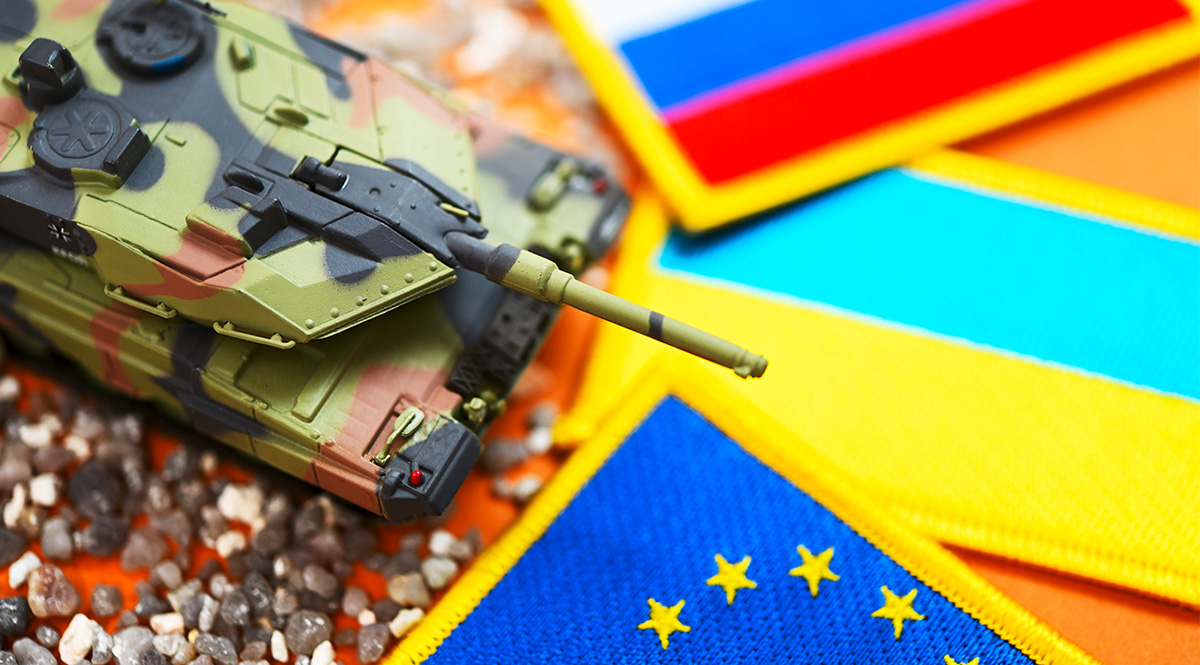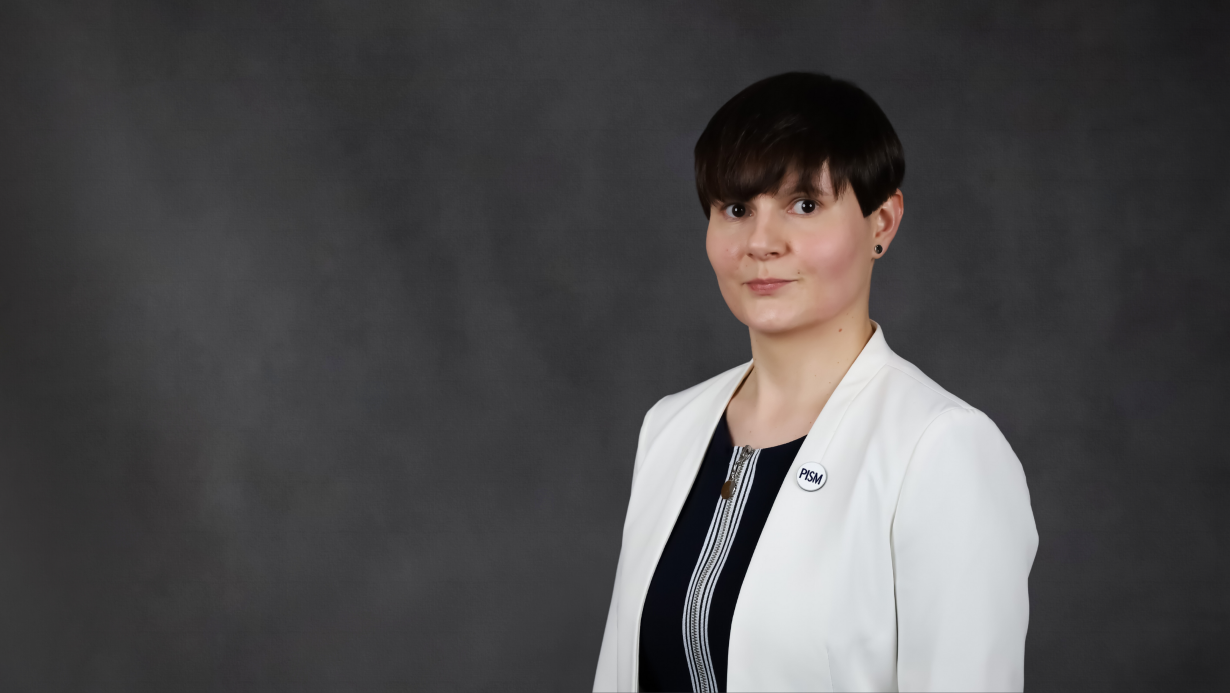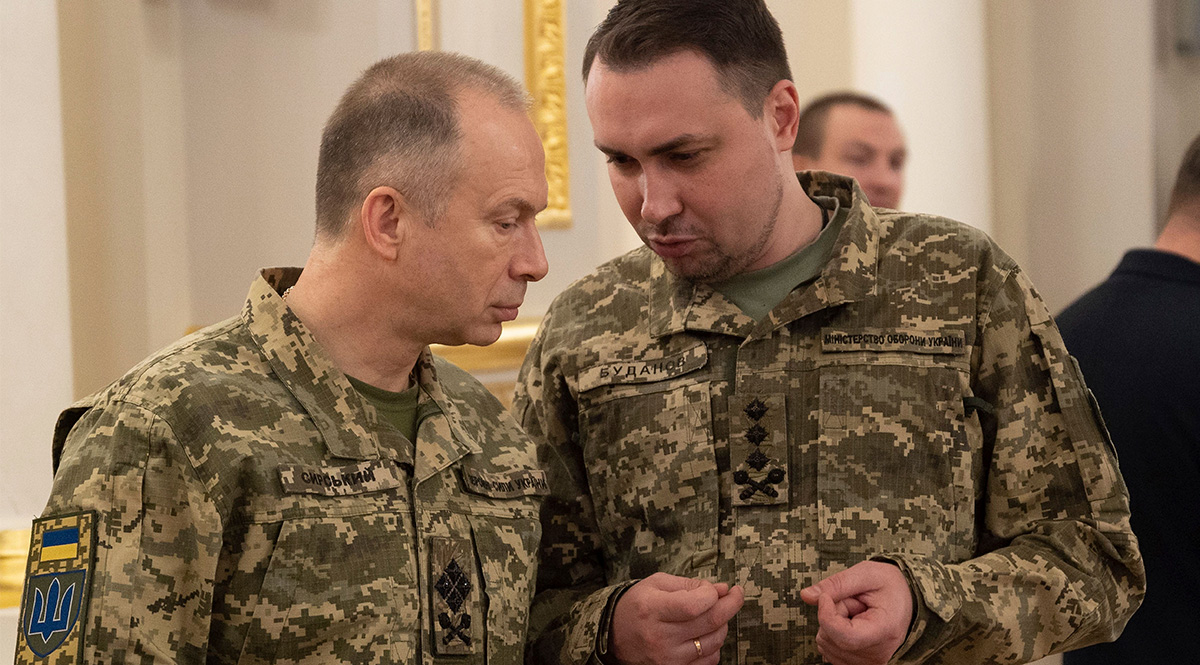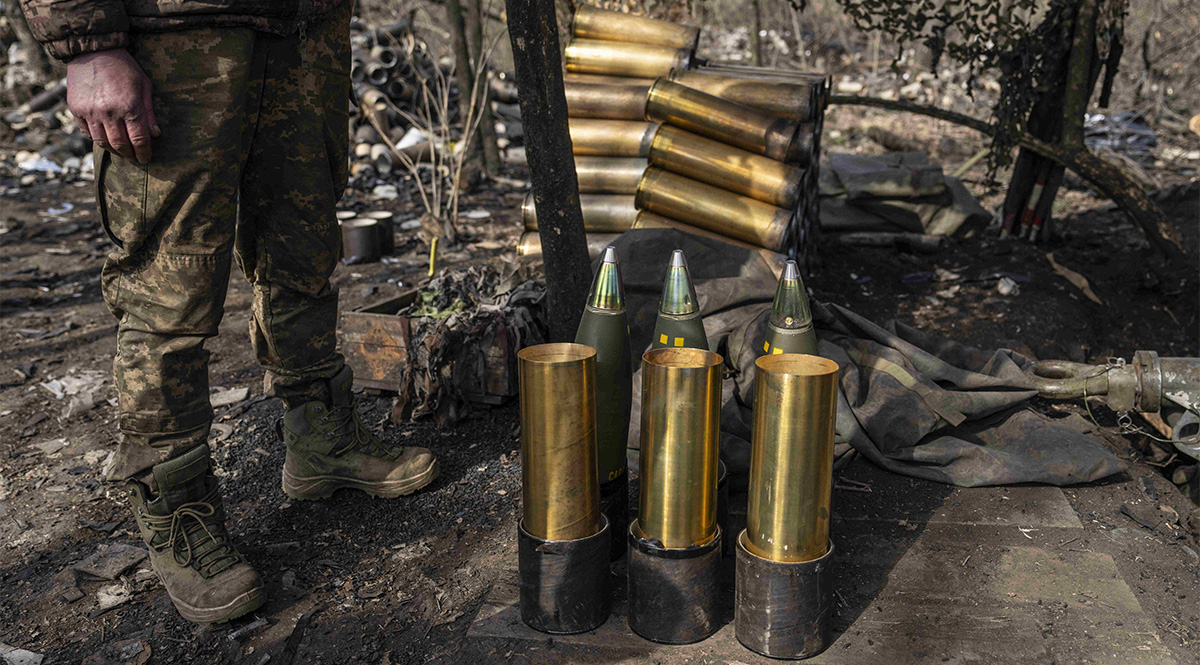Future of European Military Assistance to Ukraine at a Critical Juncture
Adopting short-term military assistance packages reduces their predictability for the defence industry and hampers Ukrainian forces on the frontline. A Ukraine victory will require guarantees of significant increases in equipment and ammunition supplies with a mid-term perspective, as well as a new agreement on the shape of security in Europe in the long-term. The EU will continue to support Ukraine, but deterring Russia will require cooperation with NATO allies.
 Chromorange / / Vario Images / Forum
Chromorange / / Vario Images / Forum
European Support for Ukraine
After more than two years of full-scale Russian armed aggression, EU military assistance to Ukraine has consolidated around two initiatives. In March this year, the Council created a new €5 billion funding line—the Ukraine Assistance Fund (UAF)—under the European Peace Facility (EPF). Through it, EU states created a dedicated mechanism to finance the provision of military equipment and supplies, including ammunition and fuel, to the Armed Forces of Ukraine. A total of €11.1 billion has been allocated from the EPF budget since 2022, with around €22 million additional contribution from Norway. Moreover, the Council launched a military assistance mission (EUMAM Ukraine) in November 2022, under which Member States have so far trained 50,000 Ukrainian soldiers in the EU. They have contributed to this with €362 million from the EPF budget, with Norway putting in around €14 million.
From 2022, the total cost of equipment and supplies delivered to Ukraine by EU states amounted to about €22 billion, and according to information provided by national authorities, the largest donors were Germany with €6.6 billion, Denmark with €4.4 billion, Sweden with €3.9 billion, Poland with €3.5 billion, the Netherlands with €2.8 billion, and France with €2.6 billion. European members of NATO play a prominent role as well, with Norway’s contribution of around €2.7 billion in equipment and supplies, and the UK, which spent around €5.5 billion on this purpose and trained 35,000 Ukrainian soldiers on top of that. Only Turkey does not report the volume of its aid. Overall, the EU and European members of NATO are responsible for almost half of the military assistance to Ukraine. The rest is provided by the U.S., which has delivered supplies amounting to around €47.8 billion. NATO is providing only a small quantity of non-lethal aid, such as food rations and medical kits.
Difficult Cooperation
At the beginning of the Russian armed aggression, the EU played an important role by initiating and coordinating Member States’ support, including ensuring that equipment, supplies, and training are well-tailored to the needs of the Ukrainian partners. However, once the potential for crisis response had been exhausted, the divergent interests of some EU countries became apparent. Hungary’s pro-Russian policy proved to be a major challenge, leading to the blocking of EPF payments, which partially reimburse Member States for their expenditures on equipment and supplies for Ukraine. Difficulties also arose in negotiating a new EPF funding line, as the UAF budget was reduced from the intended €20 billion over four years to €5 billion for expenditures over a shorter period. In addition to Hungary’s opposition to military support for Ukraine, the negotiations were also influenced by the position of states such as Germany and France, which wanted to change the conditions for reimbursement. In the end, it was agreed that priority would be given to joint procurement on the EU (and Norwegian) market at the expense of providing equipment and supplies from their own stockpiles, purchased unilaterally or outside the EU (and Norway).
Coordinating positions with Türkiye, a European ally in NATO with significant military potential, also remains a challenge for EU states. Most of them are critical of Recep Tayyip Erdogan’s balancing strategy. At the beginning of the war, Türkiye supplied Ukraine with Bayraktar drones (and started building a factory near Kyiv in February this year) and issued a decision closing the straits on the basis of the Montreux Convention, which hampered the Russian navy in the Black Sea. Earlier this year, however, the Turkish authorities declared that two mine-sweepers given to Ukraine by the UK would not be allowed to enter the Black Sea, even though they were to be used to clear sea lanes vital to Ukraine’s grain exports. Türkiye based its decision on the same provisions of the Convention it used to close its straits to Russia during the war.
Security Perspectives
The protracted war is evolving in Russia’s favour, as European countries and their global partners, despite significant initial mobilisation, are unable to provide Ukraine with sufficient numbers of military equipment and supplies. The situation on the frontline was affected first by delays in decisions to send certain types of weapons (e.g., fighters, tanks, missiles) and then by the declining volume of supplies, especially artillery ammunition, due to shortages in the western defence industry, which has not been able to respond sufficiently to the increased demand.
Emerging policy differences within the EU, such as those related to the negotiation of a new budget under the EPF, reflect the reluctance of some states to make longer-term military commitments to Ukraine. The UAF provisions will also limit the possibility of refinancing the acquisition of military equipment and supplies outside the EU, analogous to the purchase of 800,000 rounds of artillery ammunition from global partners coordinated by Czechia. Although the European Defence Industrial Strategy envisages an increase in investment to significantly boost production capacity, the implementing legislation and budget are still lacking. Therefore in the near term, Ukraine will continue to face shortages in equipment and ammunition.
Given the state of the EU defence sector, it is also doubtful that European states will be able to partially replace American aid to Ukraine in the upcoming months. However, the protracted negotiations on the latest aid package in Congress, as well as growing isolationist tendencies and the possibility that further packages will be blocked, will require a greater commitment, especially from those countries that have so far not provided Ukraine with aid proportionate to their military potential (e.g., France) or their GDP (e.g., Germany).
The results of the European Parliament (EP) elections may also reduce military assistance to Ukraine. Instability in national politics, visible in France and Spain, and the need to appoint new governments will draw away attention to domestic issues and make these states more vulnerable to Russian hybrid activities. At the same time, a decline in support for left-wing and Green parties and a rise in support for far-right parties will increase the visibility of Russian propaganda in the EU. Nevertheless, the EU’s long-term policy of deepening security cooperation with Ukraine is unlikely to change, as centrist and moderate parties have the majority in the EP.
Conclusions
Improving the situation on the frontline requires European partners to take up more of the responsibility from the U.S. for military assistance to Ukraine. Given the poor state of the European defence sector, however, out-of-the-box solutions are still needed in the short term, such as the purchase of artillery ammunition on world markets, decisions to supply advanced systems such as Patriot air defence units, and the lifting of geographic restrictions by donors of military equipment on hitting targets on Russian territory to allow Ukraine to effectively implement its active-defence strategy. Engagement for Ukraine would also be more successful if, unlike the UAF adopted this year, it were programmed for the longer term. This would provide guarantees of contract performance for European industry and facilitate operational planning for the Armed Forces of Ukraine. The negotiated agreement on security commitments between the EU and Ukraine will not reverse this trend unless it includes concrete provisions on the scale and scope of military assistance in the mid-term.
Cooperation of the EU with like-minded allies such as the U.S. and the UK is essential for Ukraine to win militarily. In this context, agreement would also be needed on the future shape of security in Europe in which Ukraine can become a member of both the EU and NATO. Although the EU is playing an increasingly important role in security and defence, as Member States invest more in their own industries and seek to take more responsibility for the situation in Europe, the Alliance’s structures are the basis for deterring Russia, and the importance of the security guarantees it provides is confirmed by the recent decisions of Finland and Sweden to join





